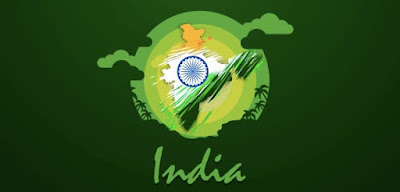The world of unknown and fear. Part 1
A parallel universe, also known as an alternative universe or alternate dimension, is a fictional self-contained plane of life that exists alongside our own. A "multiverse" is a concept used to describe the sum of all possible alternate universes that make up reality.
A parallel universe—or, more accurately, continued contact between the parallel universe and our own—might be a key plot point, or it might just be stated and quickly discarded after serving its function of creating a realm free of realism. For example, various books and movies barely references our world or any other planets, as the books are set in a parallel universe rather than "our" reality to allow for magic on the Disc. The concept of parallel worlds is brought up but only briefly discussed in the introduction and end of The Chronicles of Narnia, with the main purpose of taking the protagonist from "our" universe to "the other." The atmosphere of the books is true to life.
2. Some Indian mythologies
- The Aleya Ghost Lights
These lights, which can be seen in the hazy swamps of West Bengal, are said to be the spirits of fishermen who died. They're typically represented as smoky apparitions that lead people off the beaten path and into the murky depths.
-Nishi Dak
In Bengali, this evil spirit is known as 'The Call of the Dark,' and it is said to call out to its victims in the middle of the night, imitating the voice of someone dear to them. It appears to be a short distance away at first, taking the victim to a deserted area where it reveals its true frightening form before killing them.
- Pishach
These demons are known to feed on the flesh of the dead, and they like to hang out in cemeteries and other places associated with death and dirt. It has the power to take over people's minds and drive them crazy.
- Boba
The Boba is a malevolent being in Bengali culture that kills people who sleep on their backs. It kills them by strangling them, and it's considered to be a more supernatural cause of sleep paralysis.
3. Western culture's paranormal beliefs
-After you've died, your body will most certainly emit a loud groaning noise
When air and gases left in a body begin to escape through the throat and nose, they can cause the vocal cords to vibrate, creating a groaning sound. Could you imagine hearing this for the first time while working in a funeral home? No, thank you!!!
- Photographing posing dead bodies was a common occurrence in the 1800s
Since photographs were a privilege at the time, if anyone died before having a picture taken during their lifetime, this was their only chance to be immortalised in a photograph. The tradition of photographing the dead became less common as photography became more commonplace in general.
- Shortly after you die, your eyeballs will flatten
One mortician likened the flattening of the eyeball to the deflating of an old grape. Eye caps are also placed under the eyelids to re-create the shape of the eyeballs during life to keep them appearing plump during funeral services.
4. Some paranormal beliefs in Africa
- Many African burial rites begin with the deceased being sent away with a request that they do not cause harm to the living, and they end with a prayer for the strengthening of life on earth and everything that benefits it. Funeral rituals, according to Tanzanian theologian Laurenti Magesa, mourn for the deceased while still celebrating life in all its forms.
- Funerals are an opportunity for the group to come together and restore their identity. In certain families, this might involve dancing and merriment for all but the immediate family, restricting or even refusing death's destructive powers and supplying the deceased with "light feet" for their travel to the other side.
- These burial and mourning rituals indicate that many of the traditions still practised in African Christian
funerals, especially ritual killings and home-bringing rites, are relics of the ancestor cult. Since a funeral is mainly a group event in which the church is just one of many participants, the church does not always influence the funeral's format.
- Some indigenous rites have been converted and given Christian definitions, which Christians, as well as those with traditional beliefs, may relate to. There are also signs of conflict, as well as the modification and discontinuation of old traditions to the point that they are no longer recognisable in that sense



Comments
Post a Comment